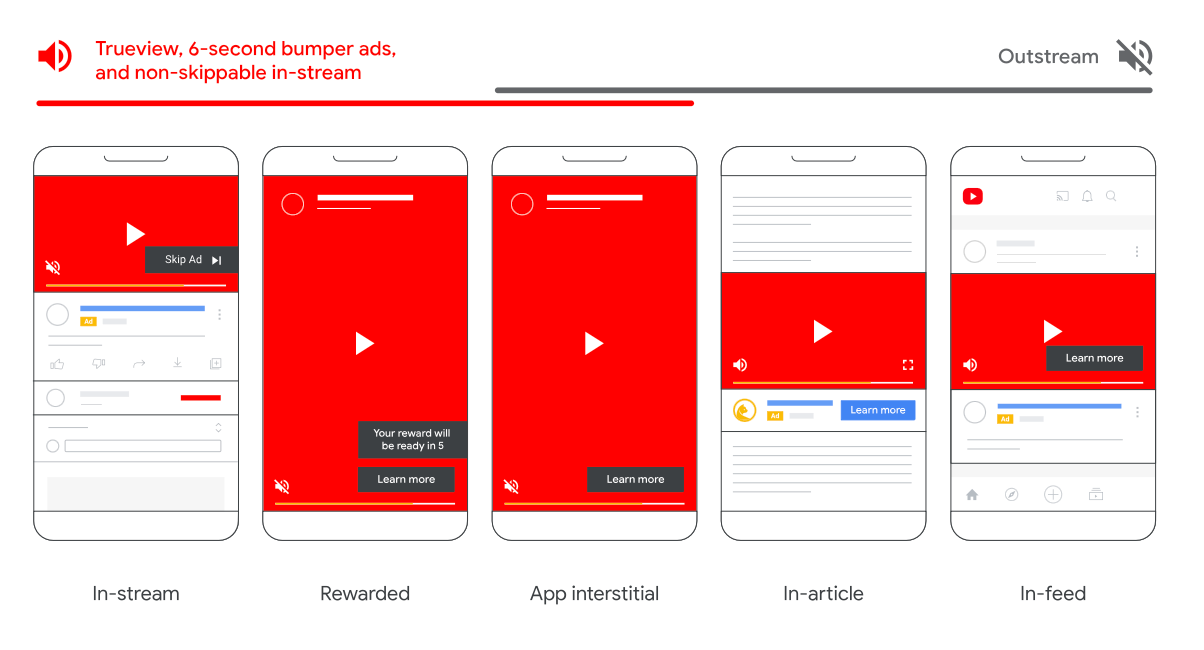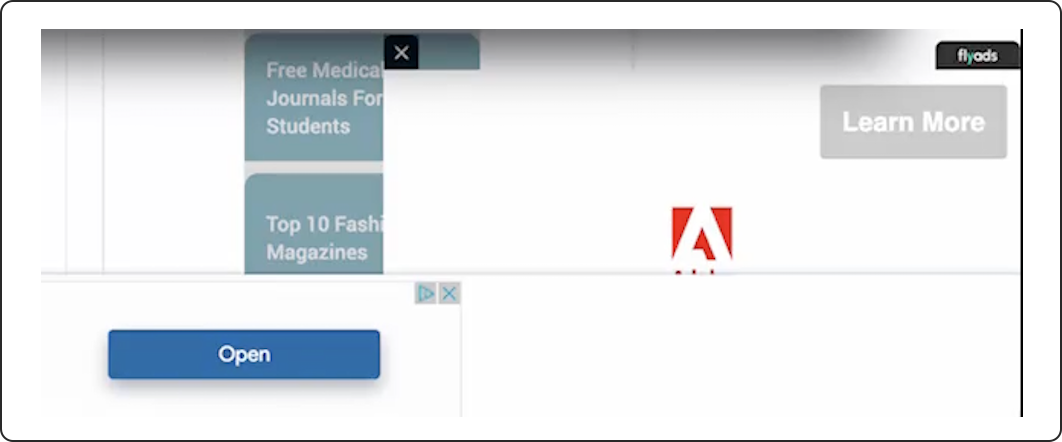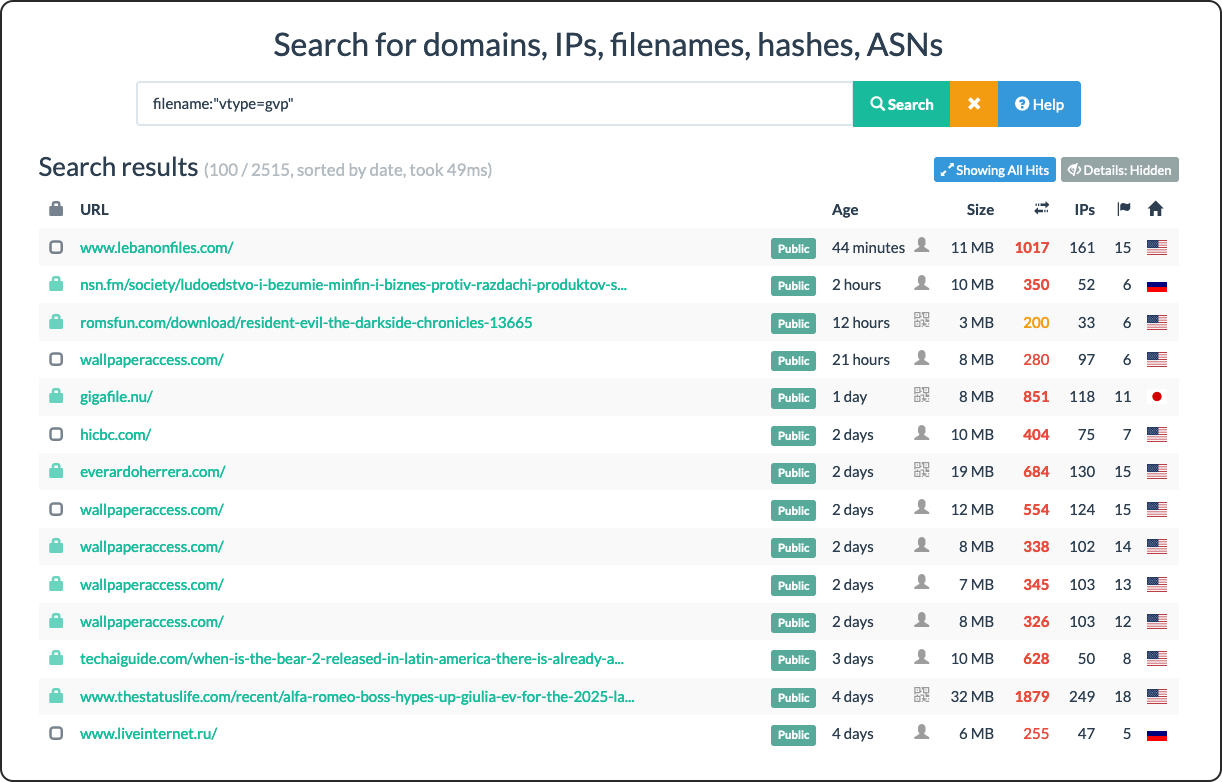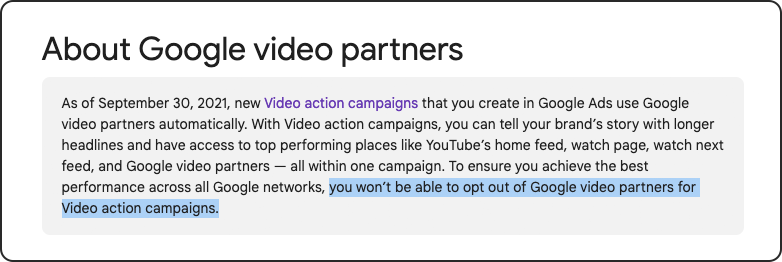Since its launch, YouTube’s TrueView skippable in-stream ad product has been underpinned with a single, tantalizing promise: you “don’t pay a dime” if viewers skip your ad. But turns out there’s a catch: they’ve made it almost impossible to skip the ads.
This is just one of the revelations that Dr. Krzysztof Franaszek of Adalytics dropped in his new bombshell report on June 27th.
YouTube leads marketers to believe that they run ads on the YouTube platform — and sometimes on a network of “highly vetted” third-party websites and mobile apps called “Google Video Partners” (GVP).
But Adalytics’ reporting, which has not been independently verified by Check My Ads, tells a different story. The report asserts that Google has been running most of the ads — anywhere from 50% to 90% of the sampled advertisers’ total budgets — on GVP and only sometimes on YouTube.
It turns out that these GVP sites are also chaotic as hell. According to Adalytics, video ads were served muted and/or obscured, making them quite literally, unskippable.
These websites aren’t the “high-quality” inventory Google claims they are either. Rather, the websites form a toxic landscape of inventory that runs the gamut: hate sites, made for advertising clickbait and even Russian state media.
In one way or another, an average of 80% of these sampled GVP ad placements don’t meet Google’s own inventory standards, Adalytics found. This audacious scheme may have cost advertisers billions.
According to the research, Google has forced advertisers, including the U.S. federal government and the E.U. Parliament, into funding a pipeline for outlets that unambiguously violate Google’s own terms of service.
Why would they do that? In today’s BRANDED, we explore how Google’s alleged advertising scam is actually the natural outcome of letting one gigantic company control nearly every facet of our digital advertising campaigns.
Meet YouTube’s Skip Button Guarantee
As you can imagine, the reason advertisers pay for YouTube ads is because they want their ads to run on YouTube.
The YouTube platform is what we call a “walled garden” — a controlled in-app environment with a consistent interface, as opposed to the unpredictable user experience you get on the wild open web.
Google gets this. That’s why they tout TrueView ads as a way to reach users on YouTube without paying for ads that users choose to skip.
In their explainer video above, “TrueView EXPLAINED While Being Bombarded With Puppies,” a Google product manager says: “You don’t pay a dime unless they choose your ad.”
Let’s call it the “Skip Button Guarantee.”
But what Jim doesn’t mention here is that YouTube doesn’t exclusively serve TrueView ads (now folded into “Video action campaigns” as part of GVP) on its app. GVP is a network of websites outside of YouTube.com that allows advertisers to reach viewers on YouTube and “across the internet.”
They position this as an equivalent experience to YouTube. Google bills GVP as an extension of YouTube itself, with “high-quality publisher websites and mobile apps where you can show your video ads to viewers beyond YouTube.”
That experience is carefully defined in Google’s own documentation. TrueView ads must meet these three standards:
✅ In-stream (before, during or after a YouTube video)
✅ Audio-on (obviously you want people to hear your ad)
✅ Skippable (viewers can hit the “skip” button after five seconds)
The “skippable” part is key, because advertisers don’t have to pay for ads that users skip.

If you’re an advertiser, you’re probably no stranger to the concept of “audience extension.”
Nearly every social media network, from Facebook to LinkedIn, offers this option to help you reach their users as they spend time outside their platform. (You also know that it’s an easy way to clean out any leftover ad spend across a large number of websites.)
But this is no leftover spend situation. Adalytics found that Google has actually been spending anywhere from 50-90% of advertisers’ ad budgets on GVP instead of on YouTube.
The other catch: you can’t skip the ads
Why would Google let advertisers think their ads are running on YouTube and then do the exact opposite thing? Perhaps because Google needs a way to get around its “Skip Button Guarantee.”
It’s very easy to skip an ad on YouTube. If Google served all its ads on its app, it would simply not make money. After all, we go to YouTube to watch the content we came for, not the ads.
So how could Google add some friction around here?
Enter the wild world of GVP. Adalytics found that GVP websites employ a myriad of chaotic ways to make it physically impossible to skip a video.
For example:
- They let ads play on top of other ads, blocking the skip button:

2. They let ads autoplay with the “skip button” hidden or obscured (see video):

3. They serve ads to bots (which aren’t hitting that “skip” button)

We know this because these sites show up as serving ads to automated crawlers sent by URLscan.io.
With the help of GVP, YouTube has run billions of dollars worth of highly overpriced ads: muted and autoplaying in small boxes in the corner of browsers everywhere, according to the report.
Google charged TrueView rates for these bottom of the barrel views. The Wall Street Journal, which first reported on this story, highlighted estimates that Google charged advertisers the same price of $100 per 1000 ads viewed to completion for ads that were worth only $5 per 1000.
Wow! It must feel nice knowing that not only have you been charged 20x what you owe, but you’ve probably also been making decisions around inflated metrics and fake video completion rates since 2020.
On the flip side, this maneuver has not only likely made Google billions of dollars. It has also lined the pockets of GVP publishers, who are probably totally cool and fine and very unproblematic.
The other, other catch: the ads will run on garbage inventory
Google says that GVP publishers are carefully vetted. They must meet Google’s inventory quality standards and comply with their Video Ad Safety Promise at all times.
In reality, GVP casts a net so wide that we can’t help but wonder: Is there really a vetting process? Because it looks like they would rather let anybody in, perhaps so they can serve more unskippable ads.
Outlets that made the “Video Ad Safety Promise” cut include:
| Outlet | Issue |
|---|---|
| RussiaToday(.)com | E.U. sanctioned Russian state media; violates Google’s Publisher Policy |
| Pravda(.)ru | Publishes Kremlin propaganda |
| WND(.)com | Banned by Google in 2021 for hate speech |
| Zerohedge(.)com | Temporarily banned in 2021 for racism, Banned in 2022 by Twitter for doxxing Chinese researcher; accused in 2022 by U.S. officials of amplifying Kremlin propaganda; |
| Breitbart(.)com | Blocked by 4000+ advertisers; Banned from 30+ ad exchanges |
| Newsmax(.)com | Currently facing defamation lawsuits for election disinformation |
| Whatfinger(.)com | Disinformation aggregator, including Breitbart, Gateway Pundit, Epoch Times and Natural News; published debunked election fraud and false claims about COVID; doesn’t disclose ownership. |
| TheBlaze(.)com | Photoshopped a KKK hat onto LeBron James; founder Glenn Beck helped incite the J6 insurrection |
| TheFederalist(.)com | Put on notice by Google Ads for racist and hateful comments section; account temporarily locked by Twitter for spreading COVID disinformation |
| Hannity(.)com | Promoted Obama Birtherism; Seth Rich murder conspiracy and claimed COVID may be a “fraud” |
None of this appears to align with the Video Ad Safety Promise, which is pretty clear about what doesn’t belong in Google’s inventory:


In fact, Google has never quite been able to explain how their vetting process works. And they still can’t.
In a response to Adalytics on June 27, they say they have one and that it’s very strict:
“In addition to the high bar we set on YouTube, we have strict policies that all third-party publishers, including Google Video Partners, must follow. We actively enforce these policies.”
But they also say:
To give you a sense of how serious we are about this, in 2022 we stopped serving ads on more than 143,000 sites for violating our policies.
Does that mean over 140,000 high-quality websites were approved for the GVP program and then suddenly stopped being high-quality? That would be a pretty alarming rate. Either their vetting process is very broken or they don’t have one at all.
Does Google have a vetting process? We could speculate all day, so let’s move on and look at another little problem.
The other, other, other catch: the ads will run on sanctioned websites
There are some publishers that are flat-out illegal to do business with — and Adalytics confirms that Google has been running them their checks.
We are also able to confirm that the EU Parliament is extremely pissed to find out that they’ve been funding Russian propaganda.
“Google deliberately makes itself the play doll of dictators, also dragging the European Parliament through the mud. The same Parliament that declared the Russian Federation in November 2022 a state sponsor of terrorism, advertises on Russian propaganda websites like Pravda because of YouTube’s scandalous system. Exposing once again the AdTech duopoly of Google and Facebook is a highly opaque game of billions which threatens democracy.”
– Paul Tang, Member of the European Parliament
The U.S. government is also going to have some auditing to do. It’s illegal for Americans to do business with a company based in a country under comprehensive sanctions, such as North Korea, Syria and Iran.
Adalytics found two instances where TrueView ads were running on mobile apps made by developers in Iran:
One was “Insta X (Free Advanced Instagram)” aka “ir.topcoders.nstax” which describes itself as “The most up-to-date Free Persian Instagram.”
The other bills itself as “a modded Persian version of Instagram Messenger” known as “Sunista,” and was developed by an Iranian team.
And those were just the ones Adalytics caught.
The biggest catch of all: you can’t opt-out
We’re now down to the worst possible (and most deeply ironic) scenario for Google: they’ve had the E.U. and U.S. governments potentially been funding sanctioned countries through Google Ads.
It feels like a bad time for Google to be working to amass near total control of ad placements, while simultaneously making it extremely hard to opt out, review or even choose your ad placements.
Over the last few years, Google has been making GVP the default setting — and in some cases, even mandatory.
In July 2019, they announced that certain TrueView ad campaigns would be opted-in to GVP by default:

Two years later, the company announced advertisers would no longer be able to opt-out at all:

In April 2022, they declared that they were “auto-upgrading” clients who had chosen to exclude GVP from their ad buys to now include GVP in their ad buys.

It gets worse.
Google has actually made it impossible for clients to independently verify Google’s data reporting, as AdExchanger found.
YouTube has a YouTube Measurement Program (YTMP) with ad verification companies like Integral Ad Science and DoubleVerify, but they have to rely on the data Google gives them to run their audits.
According to Adalytics:
The vendors are not able to place their own, independent pixels or code directly into the YouTube ad serving environments. This means they must rely on data that YouTube itself collects and then makes available to them.
What are you going to do with Google’s data anyway? You can’t see where you run on the web because their placement reports don’t tell you the **page URL, section, or sub-domain on which a TrueView ad ran.
If you did somehow get your hands on that information, you wouldn’t be able to do anything about it. You can’t choose which GVP publishers you want to run on. If you run ads with GVP, you must run on all its inventory.
So here’s what’s next for Google
Google didn’t respond to Check My Ads’s request for comment in time for publication.
In the only public statement they’ve made so far, Marvin Renaud, Director of Global Video Solutions for Google, said Adalytics’s report used “unreliable sampling and proxy methodologies” and “made extremely inaccurate claims.”
But since the only source of data is Google’s own reporting, there’s no way for advertisers to independently verify those claims for themselves.
Honestly, they seem scared. And they should be. It looks like YouTube’s TrueView ads were built on the brazen confidence of a company that operates with a near total monopoly of the digital advertising market.
Now, Google is going to be paying for this in more ways than one. It looks like the E.U. is gearing up to ask Google for a refund. The U.S. federal government will likely follow suit. And since these clients also happen to have at least four antitrust cases against the company between them, Google is about to face down their biggest existential crisis yet.
The fact is, this scam would have never been possible if Google and YouTube were separate companies.
So what should marketers do in the meantime?
- Reach out to Google to ask about their refund process. How will they make this right? And how can you verify that you’re getting the correct amount deposited back into your bank account?
- Ask Google to make GVP an “opt-in only” option. We don’t want our ad dollars going to illegal websites now, do we?
- Get Google to share their GVP inventory vetting process with us. After this seismic breach of trust, we are all very curious.
Thanks for reading!
Love,
Claire and Nandini
Did you like this issue? Then why not share! Please send tips, compliments and complaints to @checkmyadshq, @nandoodles and @catthekin. If you like this work, please support Check My Ads as a member!
